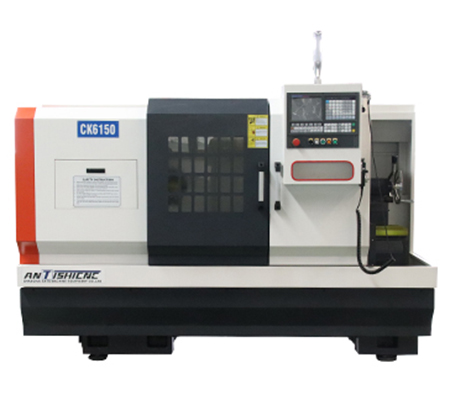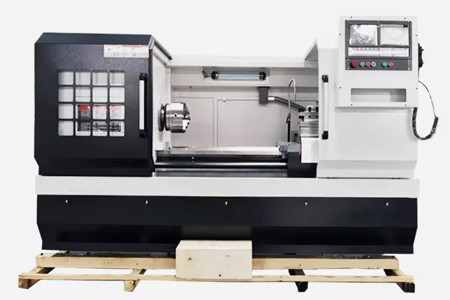CNC lathes are high-tech and complex mechatronics equipment. The causes of their failures are generally complex, which brings a lot of difficulties to the diagnosis and troubleshooting of CNC lathes. In order to facilitate fault analysis and processing, CNC lathe failures can be roughly divided into the following categories.
1.Host failure and electrical failure
Generally speaking, mechanical failures are more intuitive and easy to troubleshoot, while electrical failures are relatively complex. Electrical failures can be basically divided into electrical part failures, servo amplification and position detection part failures, computer part failures and spindle control part failures according to the parts. As for the failures caused by programming, most of them are caused by inconsideration or input errors. Just follow the prompts to modify them.
(1) Host failure. The host part of the CNC lathe mainly includes mechanical, lubrication, cooling, chip removal, hydraulic, pneumatic and protection devices. Common host failures include mechanical transmission failures and excessive friction of the guide rail caused by improper mechanical installation, debugging and operation. The failure is manifested as loud transmission noise, poor processing accuracy and high running resistance.
(2) Electrical failure. ①Electrical fault on the machine tool body. For this kind of fault, you can first use the alarm number prompt of the machine tool self-diagnosis function, check the ladder diagram or check the IO interface signal status, and check according to the drawings, materials, troubleshooting flowcharts, adjustment methods provided in the machine tool maintenance manual, and combine the staff’s experience.
②Servo amplifier and detection partial fault. For this kind of fault, you can use the alarm number of the computer self-diagnosis function, the information status indicators on the computer and servo amplifier driver board, the fault alarm indicator, the waveform and voltage values of the key test points introduced in the maintenance manual, the relevant parameter settings of the computer and servo amplifier board, the setting of the short-circuit pin and the adjustment of the related potentiometers, and the replacement of the function compatible board or spare board to make diagnosis and troubleshooting.
③Computer partial fault. This kind of fault mainly uses the alarm number of the computer self-diagnosis function, the information status indicators on each board of the computer, the waveform and voltage values of each key test point, the adjustment of each relevant potentiometer, the setting of each short-circuit pin, the setting of the relevant machine tool parameter value, and the special diagnostic components, and refer to the computer control system maintenance manual, electrical diagram, etc. for diagnosis and troubleshooting.
④AC spindle control system fault. When an AC spindle control system fails, you should first understand whether the operator has made unexpected operations that do not comply with the operating procedures, whether the power supply voltage has been abnormal for a moment, and perform an external inspection to see if there are any intuitive and easy-to-check faults such as short circuit breakers and fuse disconnections. If not, confirm whether it is a fault with an alarm display or a fault without an alarm display, depending on the specific situation.
2.System faults and random faults
(1) System faults. This fault refers to a fault that will inevitably occur in a machine tool or CNC system as long as certain conditions are met. For example, if the network voltage is too high or too low, the system will generate an overvoltage alarm or a low voltage alarm; if the cutting amount is not arranged properly, an overload alarm will be generated, etc.
(2) Random faults. This type of fault refers to a fault that only occurs once or twice under the same conditions. It is not easy to artificially cause the same fault to occur again, and sometimes it is difficult to encounter it again for a long time. The diagnosis and elimination of this type of fault are very difficult. Generally speaking, this type of fault is often related to local looseness and misalignment of the mechanical structure, drift of the working characteristics of some components in the CNC system, and reduced reliability of the machine tool electrical components. For example: a CNC machine tool was working normally, but suddenly drift occurred when the spindle stopped. After the power was cut off and then powered on again, the drift phenomenon could not be eliminated. After adjusting the zero drift potentiometer, the phenomenon disappeared. This was obviously caused by the drift of the working point. Therefore, to eliminate this type of fault, repeated experiments and comprehensive judgments should be carried out. Some CNC machine tools use electromagnetic clutches to shift gears, and the residual magnetism of the clutch will also produce similar phenomena.
3.Display fault and non-display fault
These two types of faults are distinguished by whether there is a self-diagnosis display when the fault occurs.
(1) Fault with alarm display. Today’s CNC systems have a richer self-diagnosis function, which can display more than a hundred types of alarm signals. Most of them are fault alarms of the CNC system itself, and some are CNC machine tool manufacturers that use operator information to display the machine tool’s faults on the display. According to the alarm signal, it is relatively easy to find and eliminate the fault. However, what is discussed here is a relatively easy situation. There are many cases where there is an alarm display, but it is not the real cause of the alarm. For example, a milling machine equipped with a FANUC control system has such a fault: the phenomenon is that the machine can only move in the negative direction after power is supplied, and an overtravel alarm is generated when it moves in the positive direction for a very small distance. After the power is turned on again, the situation is the same as the above result. After diagnosis, it is actually due to a sudden power outage, the CNC system is disturbed, causing the CNC system to return to the reference point completion state after power is supplied, and then the overtravel alarm is naturally generated when it moves in the positive direction.
(2) Fault without alarm display. There is another situation in which the CNC machine tool fails, that is, there is no alarm display. However, the machine tool is in an abnormal state. Often, the machine tool stops at a certain position and cannot work normally, and even manual operation fails. Maintenance personnel can only analyze and judge based on the phenomena before and after the fault occurs. It is relatively difficult to eliminate this type of fault.
4.Destructive fault and non-destructive fault
Faults are divided into destructive faults and non-destructive faults according to whether the fault is destructive when it occurs.
(1) Destructive fault. This type of fault can cause damage to the machine tool and the operator, resulting in damage to the machine tool or personal injury, such as runaway, over-travel movement, component collision, etc. These destructive faults are often caused by humans. After a destructive fault occurs, maintenance personnel are not allowed to reproduce the fault when diagnosing the fault.
(2) Non-destructive faults. Most faults belong to this type of fault, which can often be eliminated by “clearing”.
Recommended hot-selling CNC lathes:

CK6150 CK6160 CNC Automatic Precision Metal Lathe Machine
|

CK6136Q CK6140Q CK6150Q High Precision Efficient Metal Flat bed CNC Lathe |


